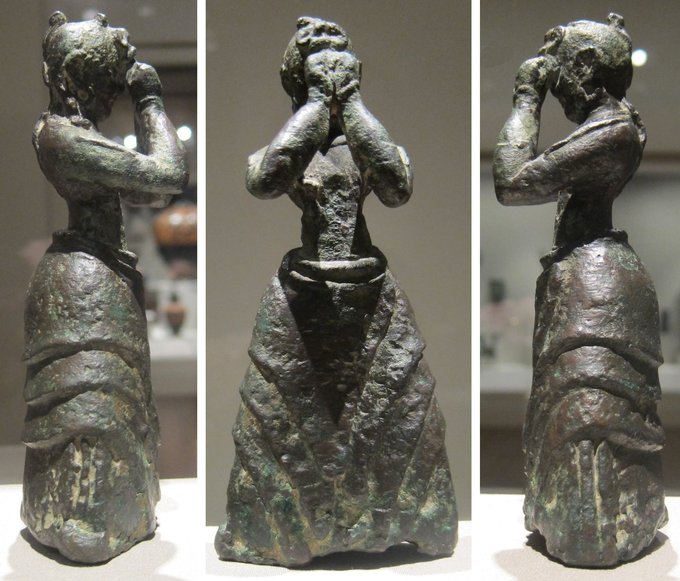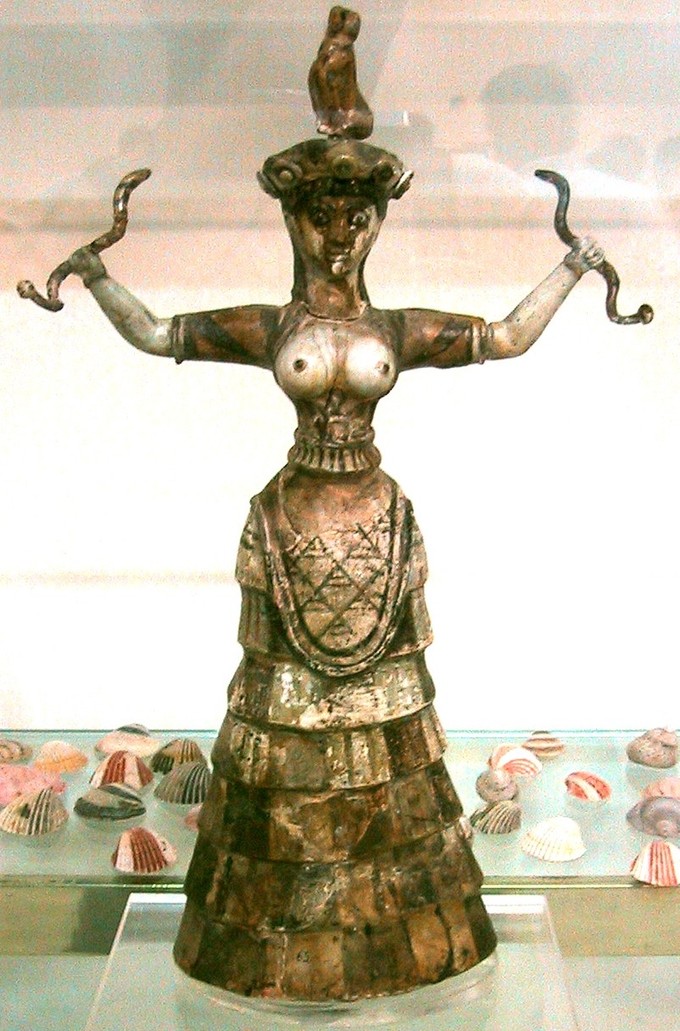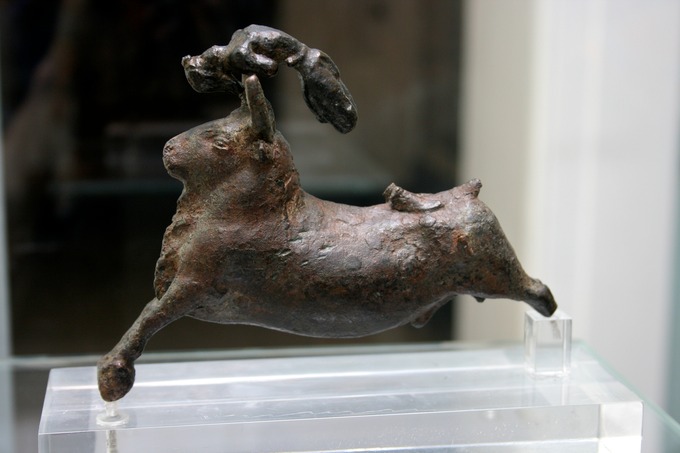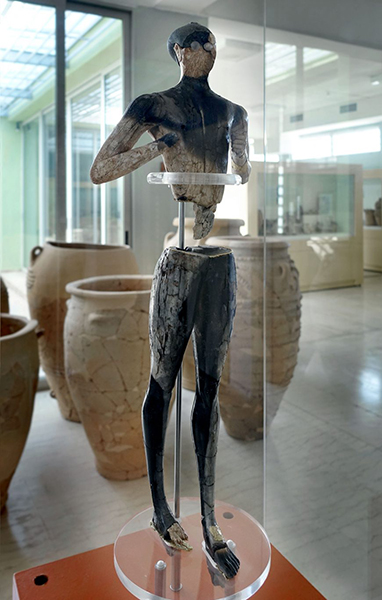Minoan sculpture consists of figurines that reflect the culture’s artistic style and important aspects of daily life.
As with their painting, Minoan sculpture demonstrates stylistic conventions including curvilinear forms, active, energized scenes, and long-limbed humans with broad shoulders and narrow waists. Women are often depicted in large, long, layered skirts that accentuate their hips. So far, the majority of sculptures and figurines found during Minoan excavations have been small scale.

Materials
The small-scale sculptures of the Minoans were produced in many different materials including ivory, gold, faience, and bronze. The variety of materials acknowledges the extensive trade network established by the Minoans. For instance, faience, a quartz ceramic, is an Egyptian material. Its presence in sculpture found on Crete demonstrates that the material was shipped raw from Egypt to Crete, where it was then formed to create Minoan sculpture.
Bronze was an important material in Minoan culture and many figurines were produced in this medium, mostly created using the lost-wax casting technique.
Snake Goddess
One figurine, known as the Snake Goddess, depicts a woman with open arms who holds a snake in each hand, with a feline sitting on her head. The purpose or function of the statue is unknown, although it is believed that she may have been an earth goddess or priestess.
The snakes are considered chthonic animals—related to the earth and the ground—and are often symbols of earth deities. Furthermore, the Snake Goddess is dressed in a layered skirt with a tight bodice, covered shoulders, and exposed breasts. The prominence of her breasts may suggest that she is fertility figure. Although her function remains unknown, the figure’s significance to the culture is unquestionable.

Other figures in similar poses and outfits have also been found among Minoan ruins.
Bull Leaper
The Bull Leaper bronze, depicting a bull and an acrobat, was created as a single group. The figures are similar in style and position, as seen in several bull-leaping frescoes, including one from the palatial complex at Knossos.

The bull stands frozen in a flying gallop, while a leaper appears to be flipping over his back. The acrobat’s feet are planted firmly on the bull’s rump, and the figure bends backwards with its arms planted on the bull’s head, perhaps preparing to launch off of the bull. The two figures, bull and man, mirror each other, as the bull’s back sways in the gallop and the man’s back is arched in a deep back bend.
In another sculpture of a bull leaper (c. 1500 BCE), the acrobat is frozen in a forward-facing mid-somersault position. This ivory sculpture from Knossos is the only complete surviving figure from a larger arrangement and is the earliest three-dimensional representation of the bull leap. Experts believe that thin gold wires were used to suspend the figure over a bull.
The figures are made with curvilinear lines and the positioning of both figures adds a high degree of movement and action that was commonly found in Minoan art.
Palaikastro Kouros
While most known Minoan sculpture is small scale, at least one sculpture serves as an exception to this rule. The so-called Palaikastro Kouros (not to be confused with the stylized male sculptures of ancient Greece), which dates to the Late Minoan period (late fifteenth century BCE), stands at almost 20 inches (50 cm) tall.

It is an example of a Chryselephantine sculpture: it consists of a wooden frame, with thin carved slabs of ivory attached to represent the flesh. Sheets of gold leaf likely represent details such as hair and clothing. Its head consists of a semiprecious green stone called serpentine with rock crystal eyes. Because of its scale and the rareness of its media, experts believe the sculpture was a cult image.